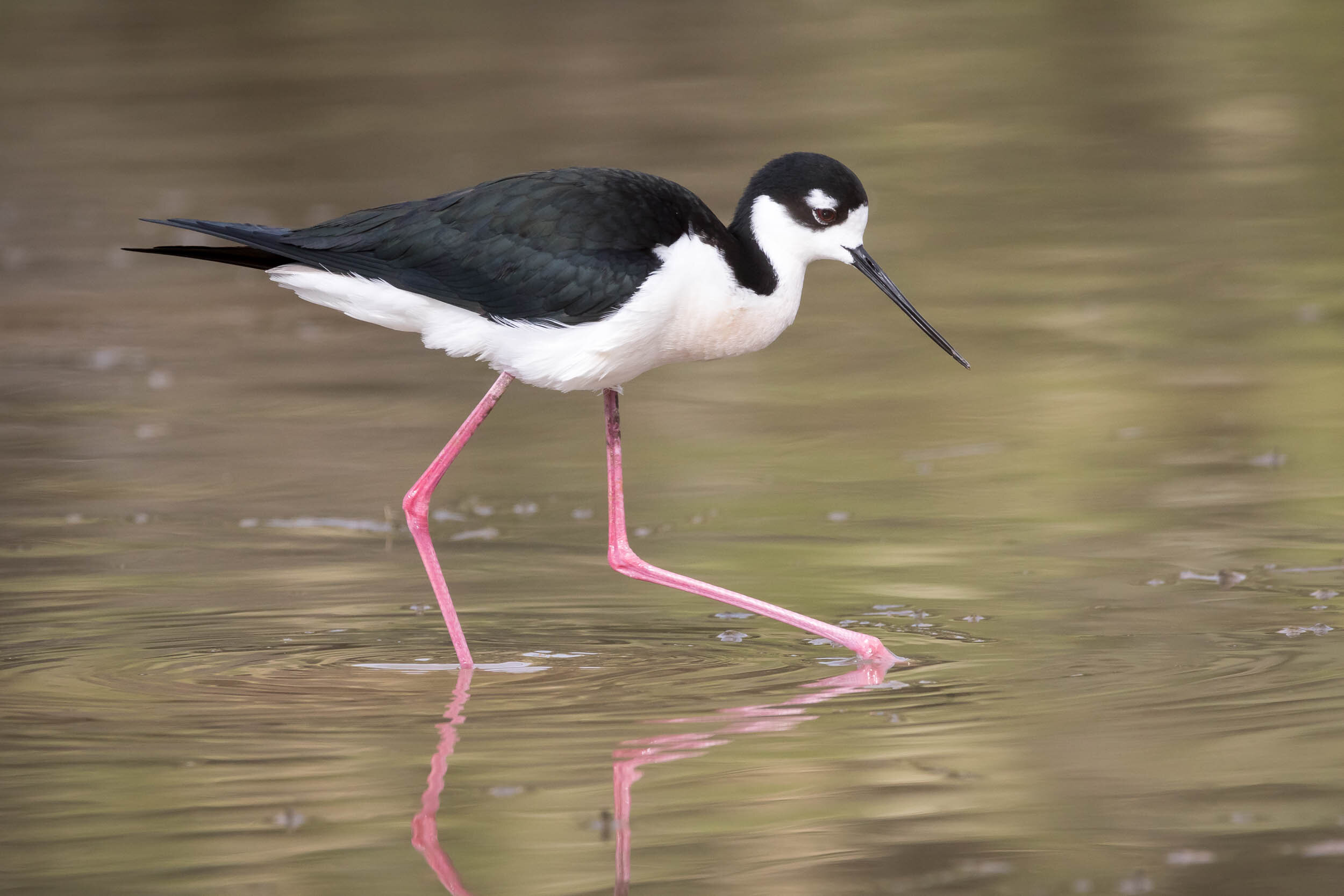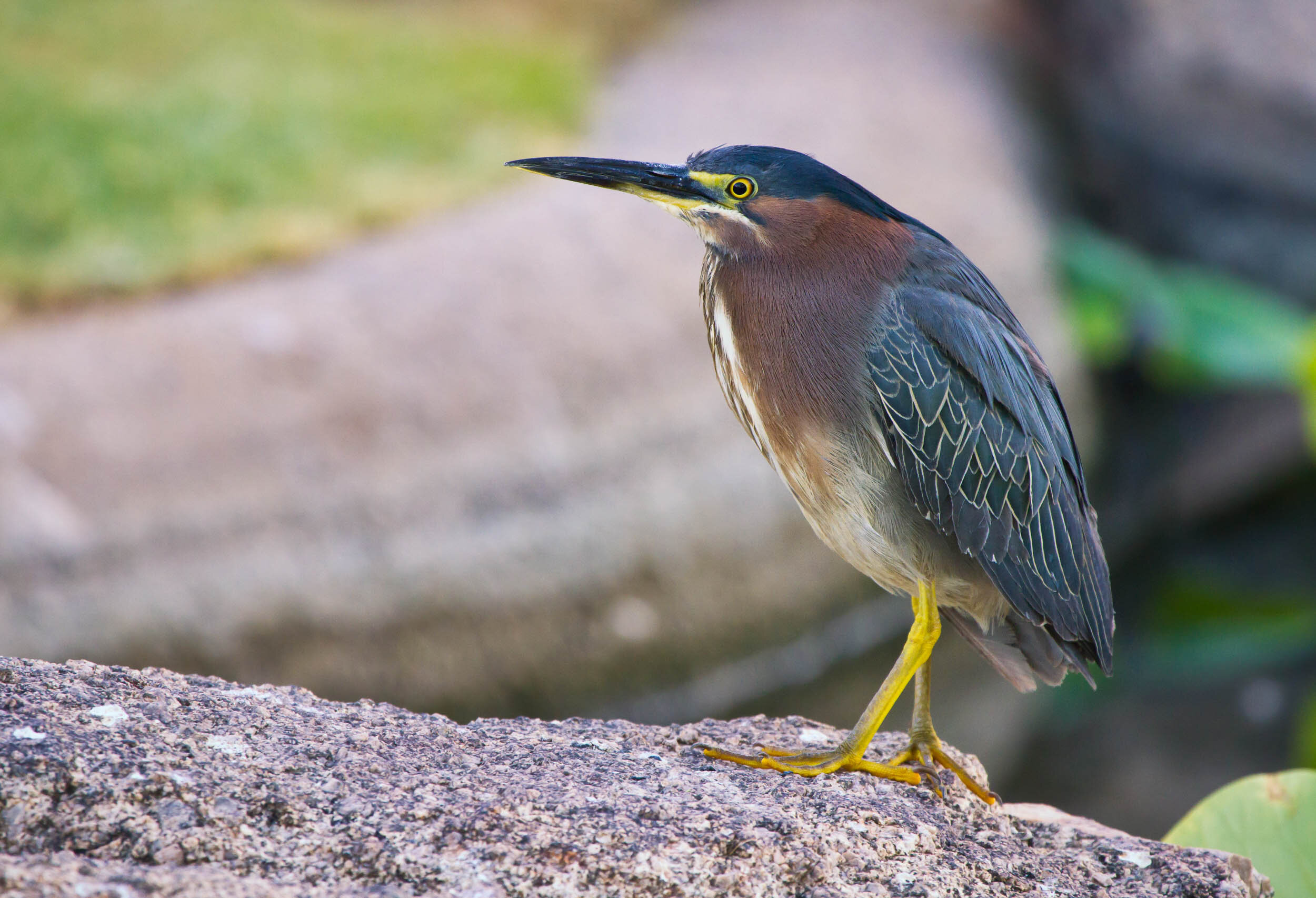The Black Squirrel gathering resources as the frigid winter appears right around the corner.
Wildlife
BACK IN BLACK
The Great-tailed Grackle can be seen mainly in the West and Midwest Regions foraging in feedlots, golf courses, parks and neighborhood lawns. They have a tendency to gather with the Blackbirds (whom they are at times mistaken for) as well on lawns and fields surveying for trash.
ON THE PROWL
Black-necked Stilts are among the most stately of the shorebirds, with long rose-pink legs, a long thin black bill, and elegant black-and-white plumage that make them unmistakable at a glance. When foraging, they can be observed walking slowly through wetlands in search of tiny aquatic prey. These birds are characterized as having the second-longest legs in proportion to their bodies of any bird, second only to the flamingo. The Black Necked stilt belongs to the same family as the American Avocet while residing in mainly warm climates in the west and south.
GREEN WITH ENVY
The Green Heron is relatively viewable in most regions of the United States while being more limited in the West. It can be spotted motionless near ponds, rivers and marshes while hunting for fish and amphibians.
THE COOLEST BIRD IN THE SOUTHWEST REGION
Today’s photo is from one of my many recent trips to Arizona. As I am unable to travel, it;’s a good time to reminisce. This is a photo of Gambel’s Quail, named in honor of William Gambel, a 19th-century naturalist and explorer of the Southwestern United States. These non-migratory birds are surprisingly fast and are a pleasure to watch. They are rarely seen in flight and spend most of their time on the ground scurrying around the desert. These are monogamous birds which rarely breed in colonies. . The female chicks which are precocial, leaving the nest with their parents within hours of hatching.
TESTING OUT THE TAMRON 150-600 TELEPHOTO-ZOOM LENS
While dabbling in bird photography the past few years, the one common complaint I share with the majority of photographers is that one can never get close enough to these amazing creatures. As an adopter of Canon equipment, I naturally gravitated to the Canon 100-400 USM Telephoto Lens. This lens provided me countless images I was proud to share, however it was not without its limitations. The one major gripe I had was that the 400mm focal length was simply not enough to compose and photography birds with the intent to fill the frame and avoid unnecessary cropping. The other minor limitation was that the lens tended to produce soft images when racked out to 400mm. While this is not surprising for a non-prime lens, I simply found it to be little too soft for my taste. After recently selling off this lens, I set out to find a satisfactory alternative which led me to test out the newly released Tamron 150-600mm Telephoto Lens. The additional 200mm of reach may just be the solution I am looking for as there are countless positive reviews of this lens online. Having said that this is not meant to be an in-depth scientific review but rather a simple and easy to understand review which can benefit the average weekend shooter looking for a similar solution.
I recently headed off the the Detroit Zoo to capture images of wildlife while putting this lens through its paces.
Male Drill
In the photo above of a Male Drill, the lens was able to focus rather quickly with the abundance of sunlight present in the scene without signs of hunting. Having shot this racked out to 600mm and wide open at aperture of 6.3, I was able to blur the background relatively well while isolating the subject. Minor tweaks were made such as contrast and minimal noise reduction since this was shot on a 1st generation Canon 7D. The level of detail in the drill's feathers was quite surprising to me having shot this on a monopod and not a tripod.
Ring-Tailed Lemur
In this shot of the ring-tailed lemur, the lens did a nice job in the shaded conditions to capture color and detail of lunch being consumed. This image was shot through a cage which presented another challenge for the Tamron which it passed with flying colors. Small adjustments were made to contrast, vibrance, white and black points with a bit of high pass sharpening for the final effect. This was shot at 309mm with an aperture of f5.6.
American Bald Eagle
This Bald Eagle was captured at the maximum focal distance of 600mm wide open at f6.3. Although the tree behind the eagle was quite close the longer focal distance managed to create some separation while providing moderate bokeh. The colors rendered nicely with minor adjustments made to contrast, vibrance and sharpening. Again, the overcast conditions did not present any significant autofocus issues on the eagle.
Prairie dog
As the Prairie Dog surfaces, I locked on and grabbed this image. This was shot at a focal length of 500mm at f6.3. Once again shooting at ground level, blurring the background was a cinch thereby isolating the subject. While a monopod is great for portability, a tripod would be the ideal choice to steady the lens due to its significant weight which becomes noticeable after a while.
Male Peacock
The iridescent shade of bright blue on this male peacock was simply captivating. The focusing mechanism grabbed onto the subject without any hiccups. This was shot at 500mm at f6.3. The background separation was quite easy to achieve in this case since I was at ground level removing most background objects. The one issue I did notice was the lens was slow to grab focus on the eye in particular while preferring the larger surface area of the body. Had the peacock been moving at a faster rate, this lens would have some trouble keeping up - this is where a stronger focusing system such as that on the Canon 1D-x might help overcome the limitations of this lens. Having said that, for a minimal investment of $1069, one cannot go wrong as a weekend warrior looking to photograph wildlife and sports in abundant lighting.







